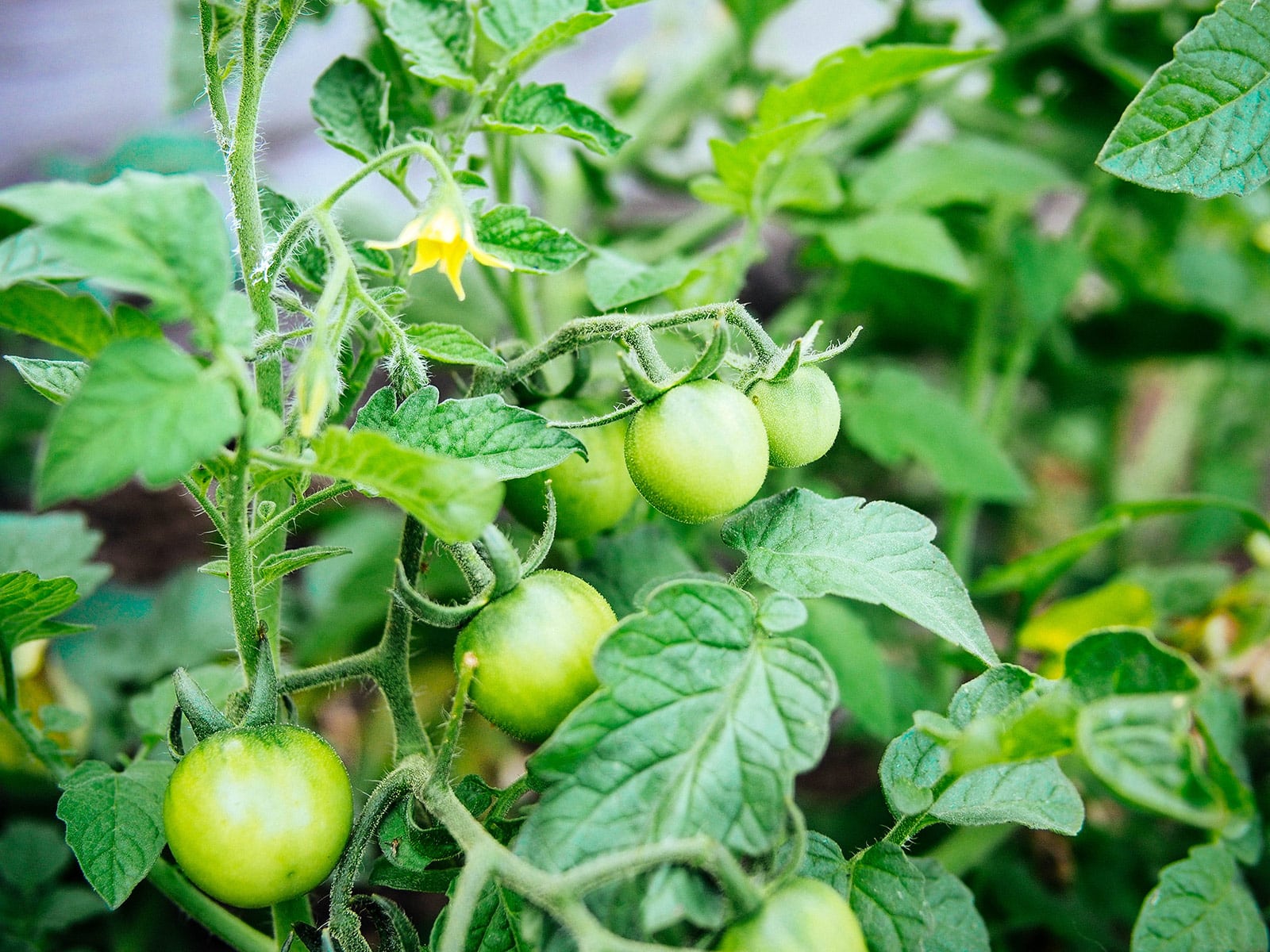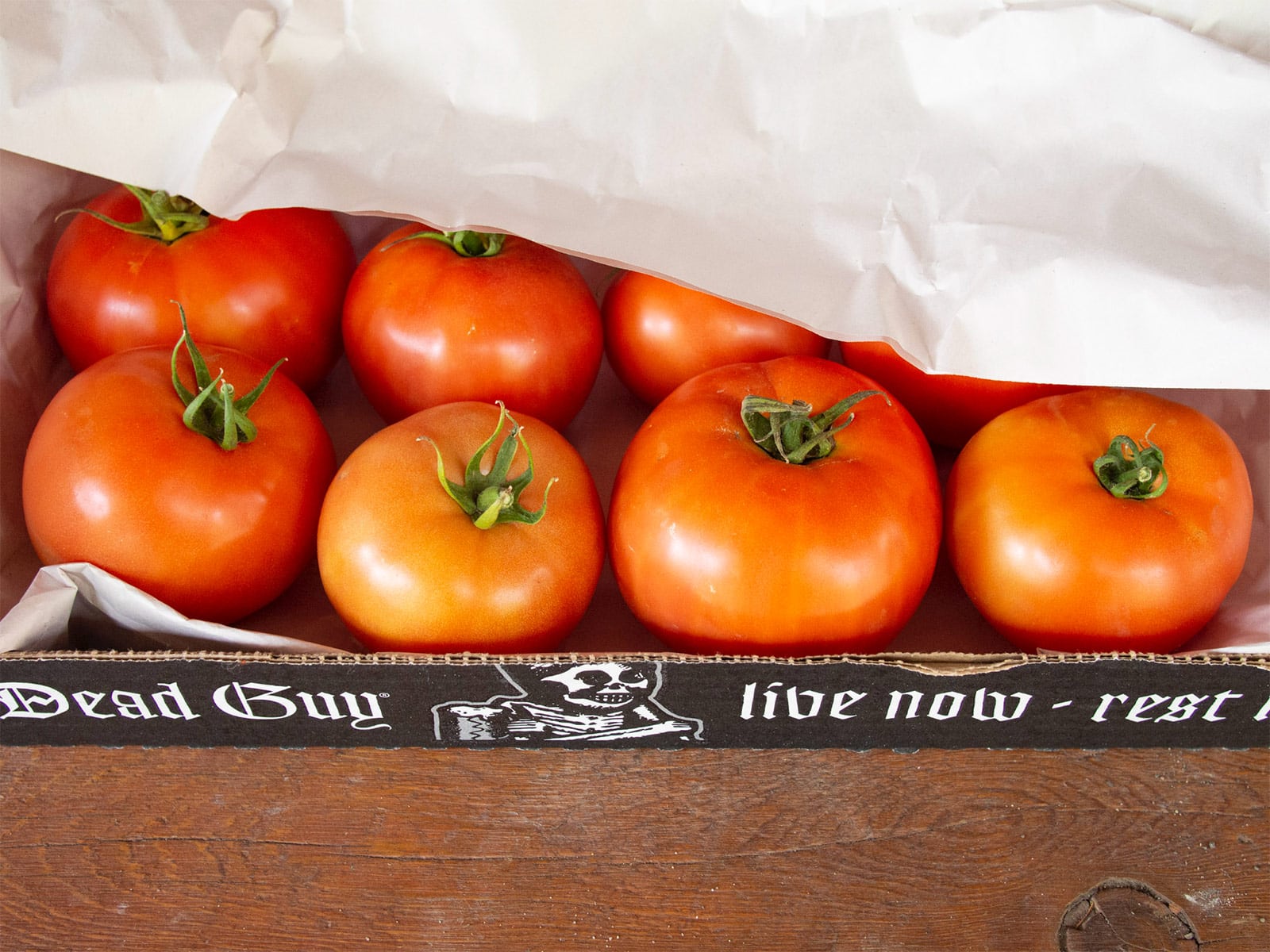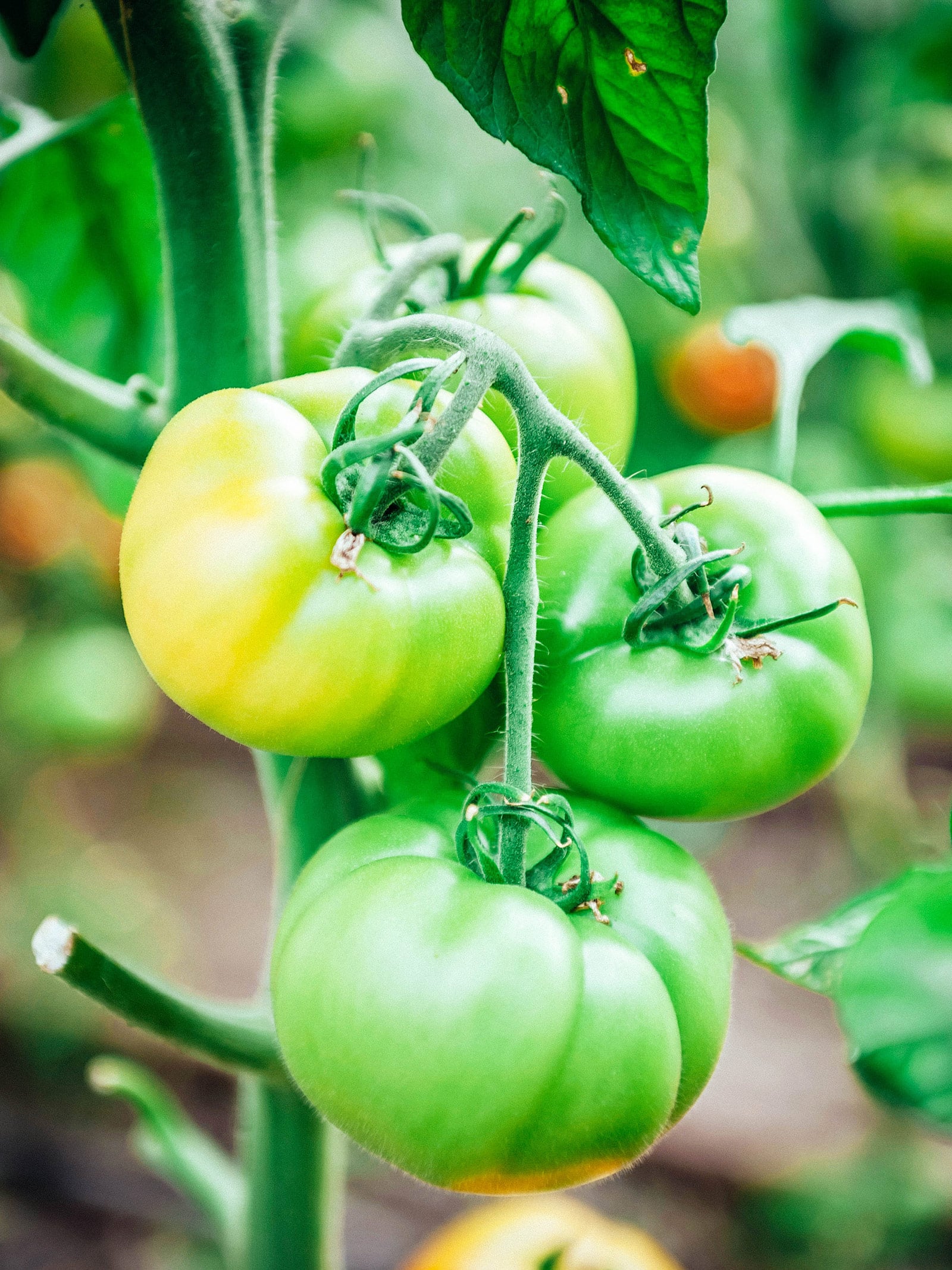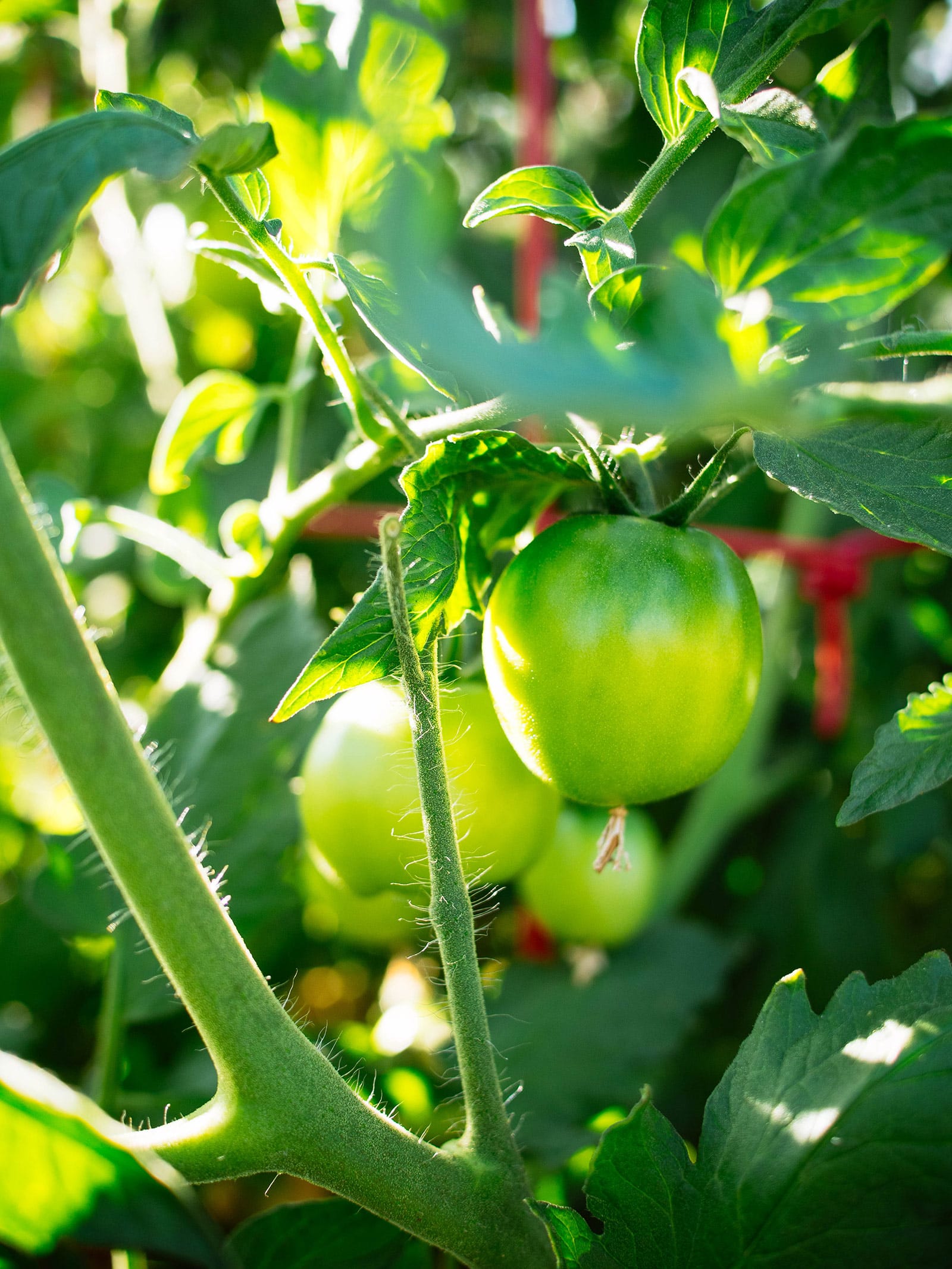It’s been a sweltering summer and if your tomato plants managed to make it through a heat wave, produce more fruits despite blossom drop, and ultimately survive blossom end rot, you’re probably expecting them to ripen pretty quickly with these long, warm days.
But instead, just the opposite is happening—and your green tomatoes are taking their sweet time turning red. What’s going on?
If ripening seems very slow, the most common reason is:
It’s too hot.
Surprisingly to many gardeners, the optimal temperature range for ripening tomatoes is cooler than you’d expect: 68°F to 77°F.
When daytime temps consistently exceed 85°F to 90°F, the ripening process slows down significantly or even stops. Lycopene, the plant pigment responsible for giving tomatoes their characteristic red color, cannot be produced in extreme heat. So tomatoes stay green for much longer until the weather cools down.

This is also why tomatoes appear fully ripe on the vine when you do the squeeze test, but stay yellowish-orange when they should be red. The fruits don’t have enough lycopene, but get some color from a yellow pigment called carotene, which is a bit more heat-tolerant.
So what you can do about it?
If the fruits have a hint of color, your best option is to harvest them at this early stage (called the “breakers” or blushing stage) and ripen the tomatoes inside your home. There’s no discernible difference in quality or flavor between vine-ripened and indoor-ripened tomatoes—except indoor-ripened fruits will get their chance at turning a nice, deep red.

You can also give your plants a bit of shade to give them some respite from the heat. Drape a shade cloth over your plants or, if you’re growing tomatoes in pots, move them to a spot that gets only morning sun or dappled sun.
Contrary to popular belief, sun is not a requirement for ripening and fruits that get too much sun may end up with sunscald. (Just something to keep in mind if you prune your plants.)
Speaking of which, sometimes a strategic prune is necessary if your tomatoes aren’t ripening. That’s because they might take a long time turning red if:
Your plant has lots of new growth.
But wait, isn’t growth a good thing? Yes… and no.
If plants are spending all of their energy forming new branches and leaves, their energy isn’t going to the fruits they already have. They want to keep growing!
So for faster ripening, you should remove any non-producing vines (the ones that have no flowers or fruits) and any discolored or damaged leaves (up to a third of the plant’s foliage). Leaves are critical for growth, of course—you just don’t need that many of them.
This sends a message to your plant that you want it to focus less on growing new leaves and focus more on ripening tomatoes.
Quick Tip
Not all tomatoes turn red when ripe. Some varieties are naturally green, cream, yellow, orange, or pink when fully ripe—double-check the seed packet or plant tag to make sure you’re not waiting needlessly for your tomatoes to change color.
If frost is imminent or you run out of patience, you can top your tomato plants to ripen the fruits faster.
Plants with lots of vigorous green growth in mid to late summer (but relatively few fruits) may also be the result of:
Too much nitrogen in the soil.
Soil fertility has no effect on how fast a tomato ripens, so adding fertilizer at this stage will not speed things up. In fact, excess nitrogen in the soil can hinder ripening because it forces the plant to continue growing new leaves. Every new leaf requires additional resources from the plant—resources that could otherwise go to ripening fruit.
Fertilizing in very hot weather can also do more harm than good. Just keep your plant healthy by watering properly, mulching the soil, and giving it shade as needed.
In general, it takes six to eight weeks from the time of pollination until a tomato fruit reaches maturity. But whether or not your tomato actually ripens in this timeframe depends on:
Your climate and the type of tomato grown.
In certain areas—and as we move closer to fall—the weather may shift from highs in the 80s (Fahrenheit) to lows around 55°F. These cooler nighttime temperatures can slow down ripening considerably, so cover your plants with frost cloth at night to keep them warmer.
Once temperatures consistently drop below 50°F, finish ripening any full-sized fruits indoors (as long as they show a hint of color—super green tomatoes will ripen if they’ve matured, but sometimes it can be hard to tell if they’ve grown to full size).

The following year, look into short-season tomato varieties that ripen early. Many of these tomatoes are cold-tolerant (so they’ll grow faster in the cooler days of spring and set fruit earlier) and some will ripen in 60 days or less, giving you a good harvest by mid-summer.
















This was very interesting, with information I’ve not encountered in and around gardens for about 3/4 century. We are actually NOT wanting tomatoes to ripen together. Growing ‘Celebrity Plus’, (I had just one seed left) and perhaps over-doing your fish fertilizer*, my wife and I usually split one of the quite large tomatoes. So ripening one a day is just right for us.)
* This spring, I tried your idea of using fish heads for fertilizer, modified by using small panfish that I caught here in Vermont. I gave the ‘Celebrity Plus’ two fish about twice as large as the ones we used for other plants. (We live in my daughter’s house, and I split my fish with her. My cabbage was large and took over most of its 25 gal. pot. After cutting the head, I tried my usual practice of cutting two perpendicular slices into the remaining stem. This usually yields 4 or more small heads or, if it is far along in the growing season, fresh tender greens. The stem of the fish-fertilized cabbage just died. Apparently it had shot its wad making a large head quickly. My daughters kale grew VERY large and tender, but the leaves began to rot. Etc. Etc.
Thanks for the tips on tomatoes
Been planting in the same veggie garden for 30 years
This year my tomatoes were few and scarred and blossom end rot and am so discouraged